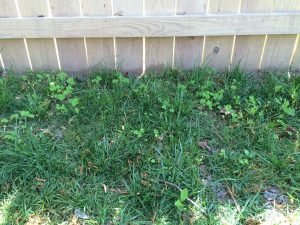While looking for a readily available, organic mulch to compliment my semi-composted pine needles, I have learned that the list of mulching styles and materials is truly endless. The list of possibilities include but is not limited to: sheet mulching, lasagna mulching (which does not actually involve pasta), plastic mulching, deep mulching, green manure mulching (which is green, but not manure), straw mulching...as I said, endless.The option I found most interesting is green mulching, using plant matter that would otherwise go into the compost bins, instead applied directly on the soil as a biodegradable mulch, effectively cutting out the middleman.I have begun this process primarily with weeds in my yard and the few volunteer plants that come up in my garden. This week the main contributor has been the Yellow Woodsorrel that has popped up in clumps all around my yard.Yellow Woodsorrel, so called for the small, yellow flowers it produces, is an edible forage green that is commonly called 'false clover' in the midwest. It has appeared this year in such abundance that I can both have my cake and eat it too by using it as a primary green mulch. Below is the result of just a few minutes worth of pulling sorrel and mulching between asparagus crowns.For my foraging friends, the other edible forage plant I have in abundance this year is Common Chickweed. It has been blooming for months so I use it as a wild edible, but not as mulch to avoid introducing new seeds into the garden.The trick with using any plant you find in your yard (weed, grass or otherwise) as green mulch is to make sure you do not include the flowers or seeds. Even when the flowers seem small and closed it is better to pluck them off before tossing them between plantings."Earth knows no desolation. She smells regeneration in the moist breath of decay." ~ George Meredith
Read More